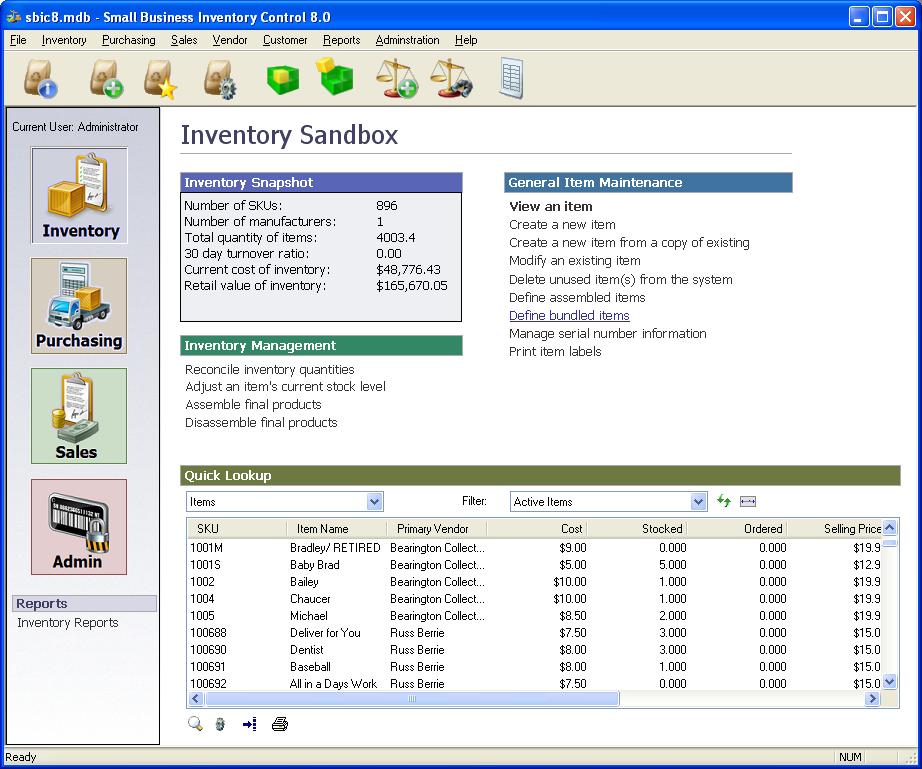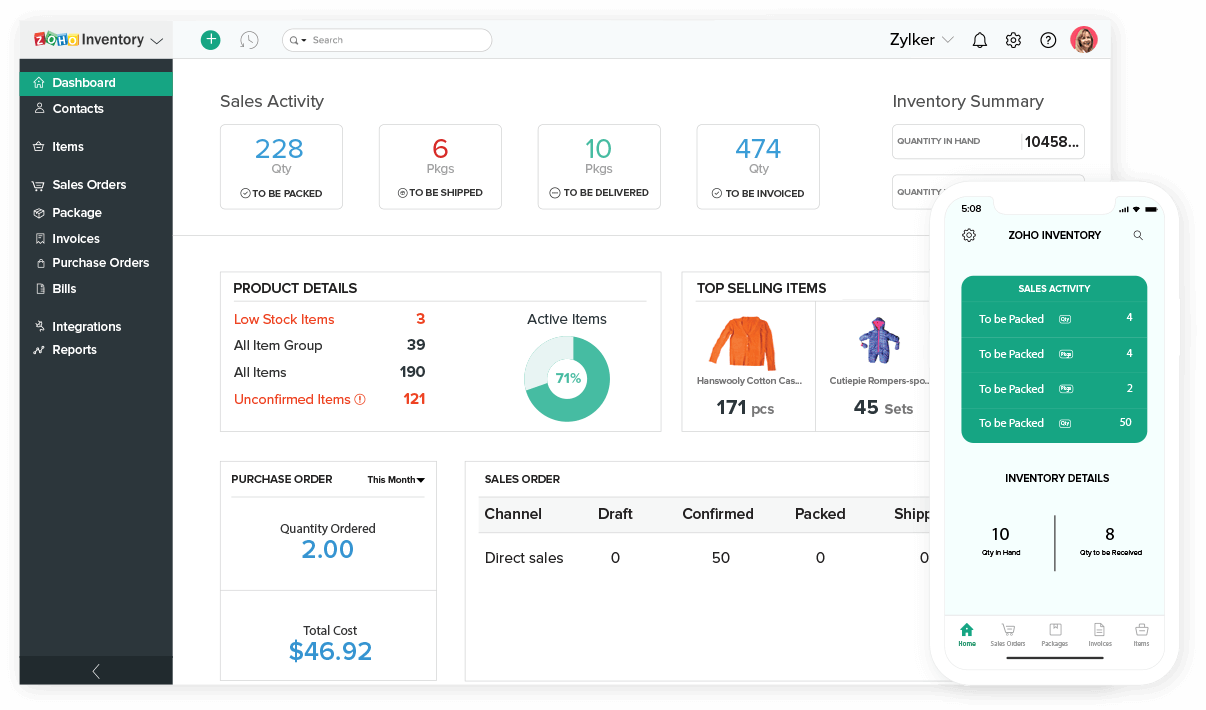Introducing business inventory small software, the cornerstone of efficient inventory management for small businesses. This software empowers businesses to streamline inventory processes, optimize stock levels, and make informed decisions.
With a comprehensive suite of features and seamless integration capabilities, business inventory small software is the key to unlocking operational efficiency and maximizing profitability.
Inventory Management Features

Inventory management software for small businesses offers a comprehensive suite of features designed to streamline inventory processes, enhance accuracy, and optimize stock levels. These features provide numerous benefits, including reduced costs, improved customer satisfaction, and increased efficiency.
Here are some key inventory management features:
Real-Time Inventory Tracking
- Provides up-to-date visibility into inventory levels across multiple locations.
- Alerts businesses to low stock levels, preventing stockouts and lost sales.
- Facilitates accurate forecasting and replenishment, ensuring optimal stock levels.
Centralized Inventory Management
- Consolidates inventory data from multiple locations into a single platform.
- Enables businesses to manage inventory across channels (e.g., online, physical stores).
- Simplifies inventory tracking and reduces the risk of errors.
Automated Inventory Replenishment
- Automatically generates purchase orders based on pre-defined rules and inventory levels.
- Reduces manual effort and ensures timely replenishment, preventing stockouts.
- Optimizes inventory levels and minimizes holding costs.
Inventory Forecasting, Business inventory small software
- Analyzes historical sales data and trends to predict future demand.
- Helps businesses make informed decisions about inventory levels and replenishment.
- Reduces the risk of overstocking or understocking, leading to cost savings and improved customer satisfaction.
Inventory Optimization
- Identifies slow-moving or obsolete inventory items.
- Provides insights into inventory turnover and profitability.
- Enables businesses to make strategic decisions about inventory management, reducing waste and maximizing profits.
Software Selection Criteria
When choosing inventory software, small businesses must consider key criteria that align with their specific needs. These include:
- Scalability:The software should accommodate business growth and expansion, handling increased inventory levels and transaction volumes efficiently.
- Ease of Use:Intuitive user interfaces and user-friendly features simplify operations, reducing training time and minimizing errors.
- Cost:Consider the software’s upfront cost, ongoing subscription fees, and potential hidden expenses to ensure affordability.
Evaluating Software Solutions
To evaluate software solutions, businesses should:
- Assess Scalability:Determine the software’s capacity to manage current and projected inventory levels, considering future business growth.
- Test Usability:Request demos or trial versions to experience the software’s user interface, navigation, and overall ease of use.
- Compare Costs:Analyze the total cost of ownership, including software licensing, maintenance, and any additional fees or services.
By carefully evaluating software solutions based on these criteria, small businesses can select the best inventory management software for their unique requirements, ensuring efficient and cost-effective inventory management.
Integration with Other Systems

Integrating inventory software with other business systems is crucial for streamlining operations and enhancing efficiency. By seamlessly connecting with accounting, CRM, and e-commerce platforms, businesses can automate tasks, eliminate data entry errors, and gain a holistic view of their inventory management.
Benefits of Seamless Integration
- Automated Inventory Updates:Real-time inventory updates across all systems ensure accurate stock levels and prevent overselling or stockouts.
- Reduced Data Entry Errors:Automatic data transfer eliminates manual entry, minimizing the risk of errors and saving time.
- Enhanced Customer Service:Integrated CRM systems provide customer-facing teams with up-to-date inventory information, enabling them to provide accurate order fulfillment estimates.
- Improved Forecasting and Planning:Integrated accounting systems provide insights into sales trends and financial performance, allowing businesses to make informed inventory planning decisions.
- Streamlined Order Fulfillment:Integration with e-commerce platforms automates order processing, reduces shipping delays, and improves customer satisfaction.
Case Study: Successful Software Integration
XYZ Company, a leading online retailer, integrated its inventory software with its accounting and CRM systems. This integration resulted in a 25% reduction in order fulfillment time, a 10% increase in sales due to improved inventory accuracy, and a significant reduction in customer complaints related to out-of-stock items.
Mobile Accessibility
Mobile accessibility in inventory software provides convenience and efficiency in managing inventory tasks on the go. With mobile apps, businesses can access real-time inventory data, update stock levels, and process orders from anywhere with an internet connection.
Mobile apps enhance inventory management by offering features such as barcode scanning, which streamlines the process of adding and tracking items. They also allow for quick order fulfillment, enabling businesses to respond promptly to customer orders and reduce shipping delays.
Mobile Features for Efficiency
- Barcode scanning:Captures item information quickly and accurately, reducing errors and saving time.
- Order fulfillment:Processes orders directly from the mobile app, expediting order processing and shipping.
- Inventory updates:Allows real-time updates to stock levels, ensuring accurate inventory data across all channels.
- Location tracking:Provides visibility into item locations within the warehouse, facilitating efficient picking and packing.
- Notifications:Sends alerts for low stock levels, order updates, and other important events, enabling timely responses.
Reporting and Analytics: Business Inventory Small Software
Reporting and analytics play a pivotal role in effective inventory management. They provide valuable insights into inventory performance, helping businesses optimize stock levels, reduce costs, and make informed decisions.Small businesses should leverage various reports and analytics, including:
- Inventory Turnover Report: Tracks how quickly inventory is being sold and replaced, indicating the efficiency of inventory management.
- Stockout Analysis: Identifies items that frequently run out of stock, allowing businesses to adjust ordering patterns and prevent lost sales.
- ABC Analysis: Classifies inventory items based on their value and usage, helping businesses prioritize inventory management efforts.
- Inventory Age Analysis: Shows how long inventory items have been in stock, aiding in identifying slow-moving items and preventing obsolescence.
- Sales Forecasting: Predicts future demand based on historical data, enabling businesses to plan inventory levels accordingly.
These reports and analytics empower businesses to:
- Optimize inventory levels: Avoid overstocking or understocking, reducing carrying costs and ensuring availability.
- Reduce waste: Identify slow-moving items and implement strategies to prevent obsolescence and losses.
- Improve customer satisfaction: Ensure product availability and reduce stockouts, enhancing customer experience.
- Make informed decisions: Use data-driven insights to make strategic decisions about inventory management, such as setting reorder points and negotiating with suppliers.
Customer Support and Training

Reliable customer support and comprehensive training are crucial for small businesses using inventory software. They ensure smooth implementation, effective utilization, and timely resolution of any challenges.
Businesses should seek software providers that offer:
- Prompt and responsive support:Timely assistance via multiple channels (phone, email, chat) during business hours.
- Knowledgeable support staff:Representatives with expertise in the software and inventory management best practices.
- Personalized training:Tailored training sessions to meet specific business needs and user roles.
- Online documentation and resources:Comprehensive user manuals, tutorials, and knowledge base articles.
Best Practices for Customer Support
- Establish clear support channels:Define dedicated phone lines, email addresses, and chat platforms for support inquiries.
- Monitor support metrics:Track response times, resolution rates, and customer satisfaction to identify areas for improvement.
- Provide proactive support:Offer regular webinars, workshops, and online forums to educate users and prevent issues.
Best Practices for Training
- Develop a structured training program:Artikel training modules, materials, and assessments for different user roles.
- Utilize multiple training methods:Combine online training, in-person workshops, and on-the-job guidance for effective learning.
- Provide hands-on practice:Allow users to practice using the software in a controlled environment before going live.
Final Thoughts

In conclusion, business inventory small software is an indispensable tool for small businesses seeking to optimize their inventory management practices. By leveraging its advanced features, businesses can gain real-time visibility into their inventory, streamline operations, and make data-driven decisions that drive growth and success.
Expert Answers
What are the benefits of using business inventory small software?
Business inventory small software offers numerous benefits, including improved inventory accuracy, reduced stockouts, optimized ordering, and enhanced decision-making.
How do I choose the right business inventory small software for my business?
Consider factors such as the size of your business, the volume of inventory, the features you need, and your budget when selecting business inventory small software.
Can business inventory small software integrate with other business systems?
Yes, many business inventory small software solutions offer seamless integration with accounting, CRM, and e-commerce platforms, providing a comprehensive view of your business operations.